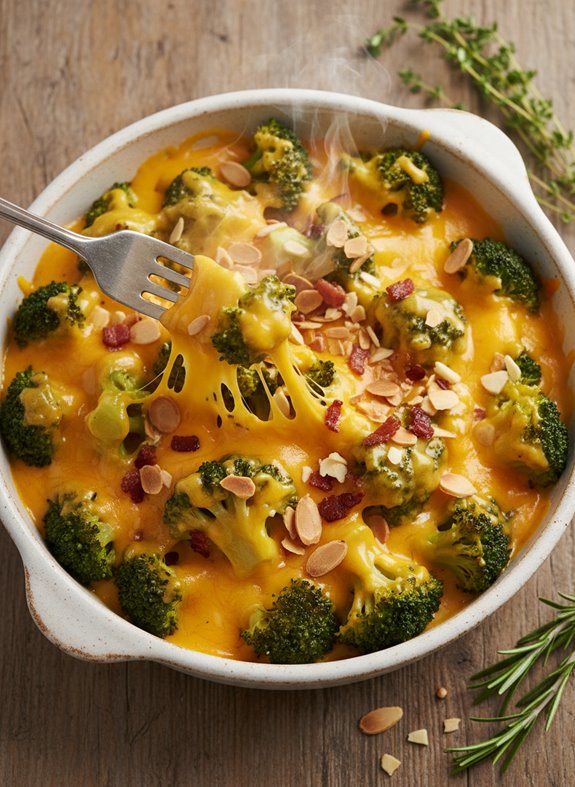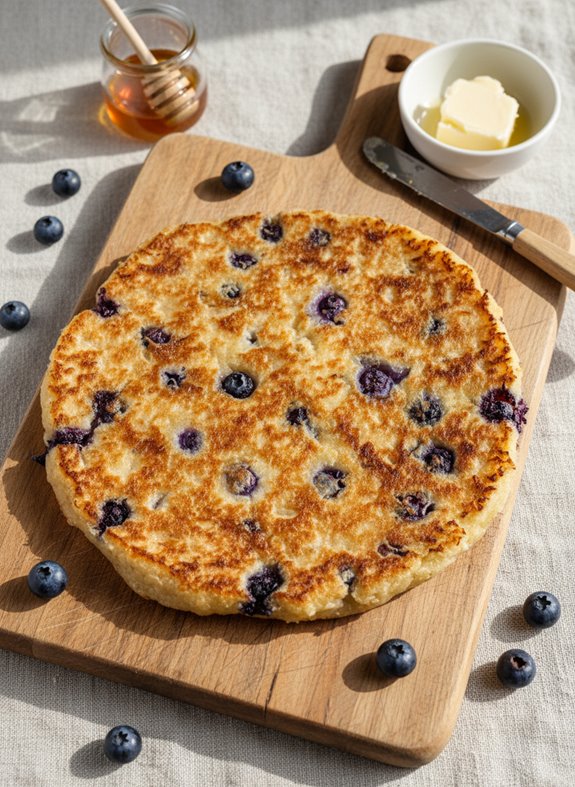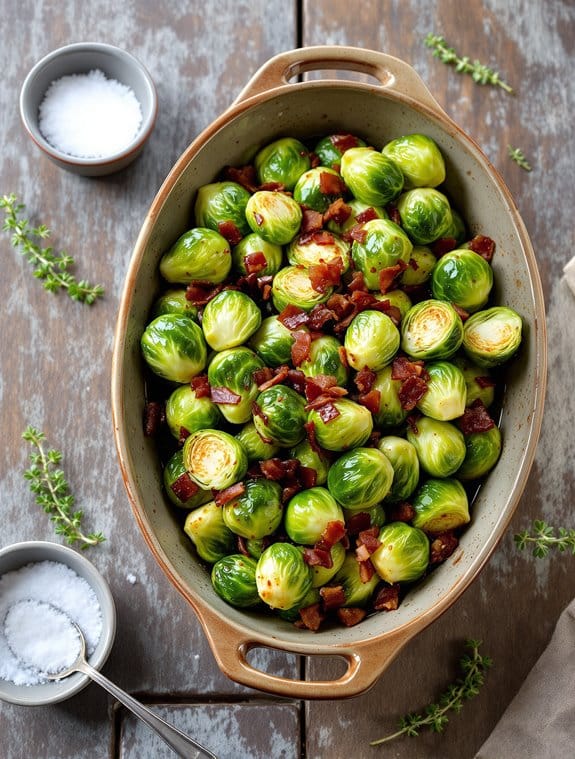Why You’ll Love this Creamy Dal Makhani
If you’ve been searching for the perfect comfort food that wraps you in warmth and satisfaction, this creamy Dal Makhani is your answer.
I’m obsessed with how the blend of toor, moong, and masoor dals creates a texture that’s velvety yet substantial.
What makes this recipe special? It’s the balance of spices that dance on your tongue without overwhelming it.
Trust me, the aroma alone will draw everyone to your kitchen.
The best part? While traditional versions simmer for hours, my streamlined method delivers that slow-cooked taste in a fraction of the time.
Perfect for weeknights when you need a hug in food form.
What Ingredients are in Creamy Dal Makhani?
Let’s talk about what makes this dal makhani so irresistibly creamy and flavorful. The secret lies in the perfect combination of lentils and aromatic spices that create layers of flavor. I’m always amazed at how these humble ingredients transform into something so luxurious.
The foundation of any good dal makhani is, of course, the lentils themselves, which develop that signature creamy texture when cooked properly.
- 1/2 cup toor dal
- 1/4 cup yellow moong dal
- 1/4 cup masoor dal
- 1 medium-sized onion, grated
- 2 green chilies, sliced
- 1/4 teaspoon grated ginger
- 1 teaspoon turmeric powder
- 1/2 tablespoon coriander, finely chopped
- 1/2 teaspoon cumin seeds
- 1/4 teaspoon red chili powder
- 1 tablespoon olive oil
- Salt to taste
- 2-3 small tomatoes
- Fresh lemon juice for garnish
When shopping for these ingredients, quality matters. Fresh spices will make a world of difference in your final dish, so consider grinding whole cumin seeds just before using if possible.
Don’t worry about finding exotic varieties of lentils—regular supermarket versions work perfectly fine. And while the recipe calls for olive oil, you could substitute ghee for a more authentic flavor profile.
The combination of three different dals is what gives this dish its distinctive texture, so try not to substitute them if possible. Ready to transform these simple ingredients into something magical?
How to Make this Creamy Dal Makhani
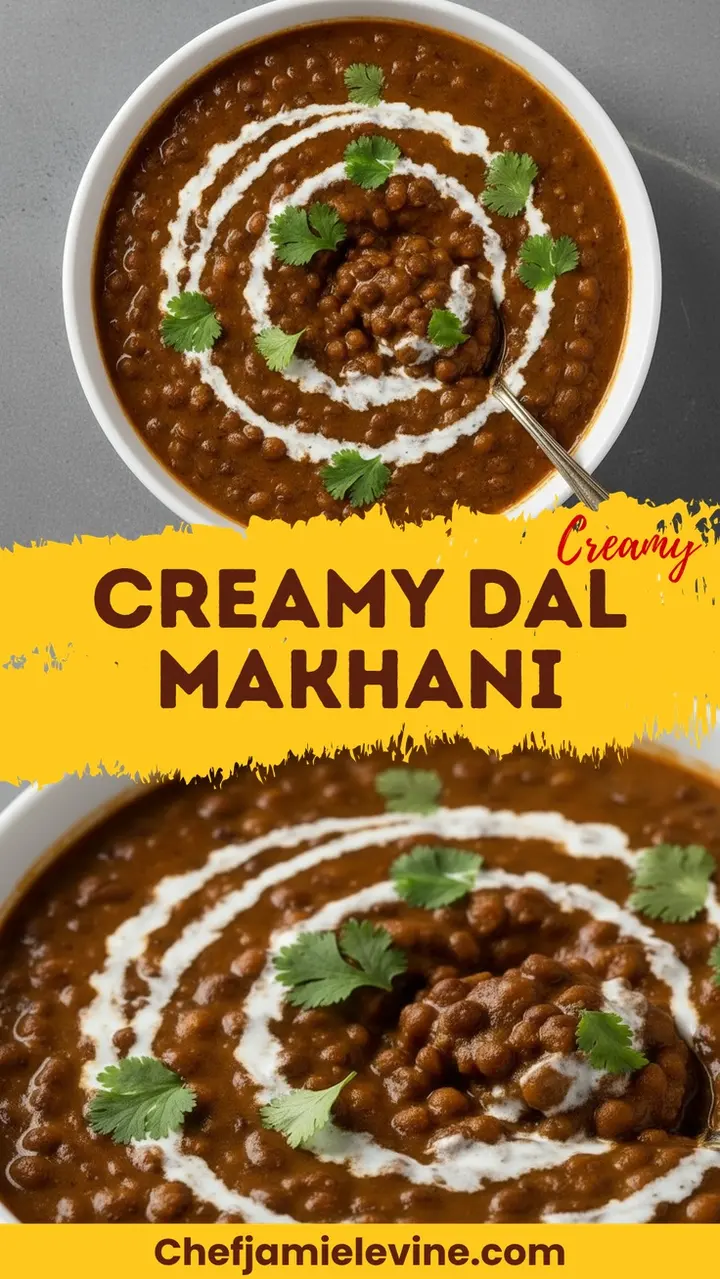
The magic of dal makhani begins with properly preparing your lentils. Start by thoroughly mixing and washing your 1/2 cup toor dal, 1/4 cup yellow moong dal, and 1/4 cup masoor dal until the water runs clear.
Then soak them for about 30 minutes—this step is essential for achieving that perfect creamy texture we’re after. Once soaked, transfer the dals to a pressure cooker and cook until they’re soft but still holding their shape, which should take approximately 3 whistles.
While the dals are still hot, mash them gently with the back of a spoon to create that luxurious consistency that dal makhani is famous for.
Now for the aromatic base that brings everything together. Heat 1 tablespoon of olive oil in a pot and add 1/2 teaspoon of cumin seeds, allowing them to dance and splutter in the hot oil.
This fragrant beginning sets the tone for the entire dish. Once the spluttering subsides, add your grated medium-sized onion, 1/4 teaspoon grated ginger, and 2 sliced green chilies. Stir-fry until the onions become translucent and soft, releasing their sweet aroma.
Then fold in 1/4 teaspoon red chili powder and 1 teaspoon turmeric powder, stirring well to coat the onion mixture before adding 2-3 small tomatoes. Let the tomatoes break down and become one with the spices, creating a rich base for your dal.
The final stage brings everything together in harmony. Once your tomatoes have softened, add salt to taste followed by your mashed dals.
Mix everything thoroughly and allow the mixture to come to a gentle boil. Reduce the heat and let it simmer for 3-4 minutes, allowing all those beautiful flavors to meld together.
Just before serving, garnish with 1/2 tablespoon finely chopped coriander and a squeeze of fresh lemon juice to brighten the entire dish.
Serve your dal makhani piping hot alongside roti or rice, and perhaps a cooling cucumber and tomato raita to balance the meal.
The contrast between the rich, creamy dal and the fresh, tangy raita creates a truly memorable dining experience.
Creamy Dal Makhani Substitutions and Variations
While mastering the classic recipe is rewarding, knowing how to adapt dal makhani to your pantry and preferences opens up a world of possibilities.
Don’t have toor dal? Swap in more yellow moong or vice versa. For a richer version, I sometimes add a tablespoon of cream at the end—transformative, trust me.
Vegetable variations? Try adding finely diced bell peppers or spinach during the final simmer. Want it spicier? Double those green chilies.
My personal favorite twist is using ghee instead of olive oil. The nutty aroma it creates? Simply divine.
And for busy weeknights, my pre-soaked frozen dal packets are lifesavers.
What to Serve with Creamy Dal Makhani
Pairing the perfect companions with creamy dal makhani transforms this humble dish into a complete meal worthy of any celebration.
I love serving mine with freshly made naan or roti, still warm from the stove. The bread soaks up all that rich, spiced gravy—heaven on a plate, truly.
Rice is another natural partner; basmati’s aromatic quality complements the creamy texture beautifully.
Don’t forget a cooling cucumber-tomato raita on the side to balance the heat. A simple kachumber salad adds invigorating crunch, while some tangy pickle provides that perfect contrast.
My dinner guests always ask for seconds when I create this balanced spread.
Final Thoughts
After cooking this creamy dal makhani countless times over the years, I’ve come to appreciate how this humble legume dish transforms into something truly magical with patience and love.
There’s something deeply satisfying about watching those simple lentils simmer away, absorbing all those wonderful spices.
I find myself returning to this recipe whenever I need comfort food that nourishes both body and soul. The rich, velvety texture, the complex flavors that develop over time—it’s worth every minute spent stirring that pot.
Whether you’re cooking for family or friends, this dal makhani recipe never disappoints. Who knew lentils could taste this good?
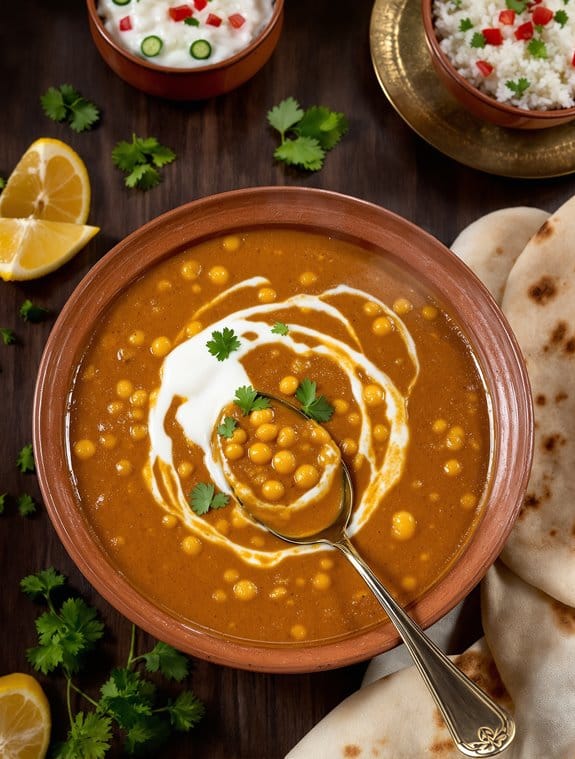
Dal Makhani
Ingredients
Equipment
Method
- Thoroughly wash the toor dal, yellow moong dal, and masoor dal until water runs clear. Soak them together for 30 minutes.
- Transfer the soaked dals to a pressure cooker and cook until soft but still holding shape (approximately 3 whistles).
- While the dals are still hot, gently mash them with the back of a spoon to create a creamy consistency.
- Heat olive oil in a pot and add cumin seeds. Allow them to splutter in the hot oil.
- Once spluttering subsides, add the grated onion, grated ginger, and sliced green chilies. Stir-fry until the onions become translucent and soft.
- Add the red chili powder and turmeric powder, stirring well to coat the onion mixture.
- Add the tomatoes and cook until they break down and integrate with the spices.
- Add salt to taste, followed by the mashed dals. Mix thoroughly.
- Bring the mixture to a gentle boil, then reduce heat and simmer for 3-4 minutes to allow flavors to meld together.
- Just before serving, garnish with chopped fresh coriander and a squeeze of fresh lemon juice.

